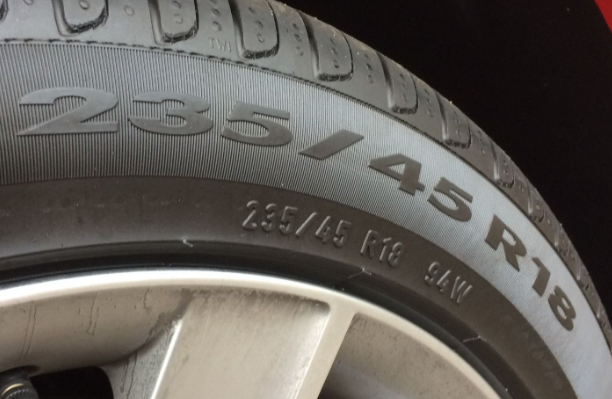They’re something many of us take for granted, but given it’s the only part of a vehicle that’s actually in direct contact with the road, their importance shouldn’t be underestimated.
But how do you actually read a tyre? Here’s a handy guide.
Most tyres have a set format that makes it easier to understand, with a typical tyre reading formatted along the lines of 235/50/R19 105Y.
Let’s explain what these mean.
- 235 – This refers to the tyre’s width in millimetres.
- 50 – This is the aspect ratio, or as it’s better known, the profile. It essentially looks at how much sidewall the tyre has. Sportier cars usually have a lower profile, while 4x4s will have a larger aspect ratio.
- R – This letter stands for ‘radial’, which refers to the particular construction pattern of the tyre. Just about all rubber these days is radial, as it’s a stronger method of building tyres. Only some historic cars use a cross-ply method.
- 19 – This is the measurement of the car’s wheels in inches.
- 105 – This refers to the weight in kilos that the tyre is able to support. On normal cars in most situations, this is something you won’t need to worry about.
- Y – This letter is a maximum speed rating. Your local tyre centre will be able to explain what it means. However, for normal driving at sensible speeds, you shouldn’t have to worry. It’s only if you’re planning on using a car for racing on track this might need to be checked. A ‘Y’-rated tyre, for example, is rated at up to 186mph…

The different types of tyre
There are three key types of tyre available. Let’s take a look at what’s best for you.
- Summer tyres – As their name suggests, this tread pattern is better suited to the warmer months. They have a relatively simple tread designed for temperatures above seven degrees. These are best for sports cars and supercars that are rarely driven in colder temperatures.
- Winter tyres – These can be identified by a snowflake symbol and have a distinctive tread pattern and composition that helps to provide greater grip in colder conditions, especially in the snow. Many drivers choose to switch to winter tyres over the colder months.
- All-season tyres – Generally seen as the best option for general use in the UK, this type of tread pattern is known for its flexibility, offering good grip in summer with a tread pattern that is designed to stop skidding or aquaplaning in wet weather.
What brand of tyres should I buy?
When it comes to choosing tyres, once you’ve got the right size and chosen which style of tread pattern you want, it’s time to select the brand.
There are a whole range of brands available, ranging from high-end to budget offerings. A safe option is to go with the tyres that were originally fitted to the car, as the car manufacturer would theoretically have chosen the best fit.
It’s worth checking out independent tyre reviews to find the best solution for you, as there’s no ‘one size fits all’.
